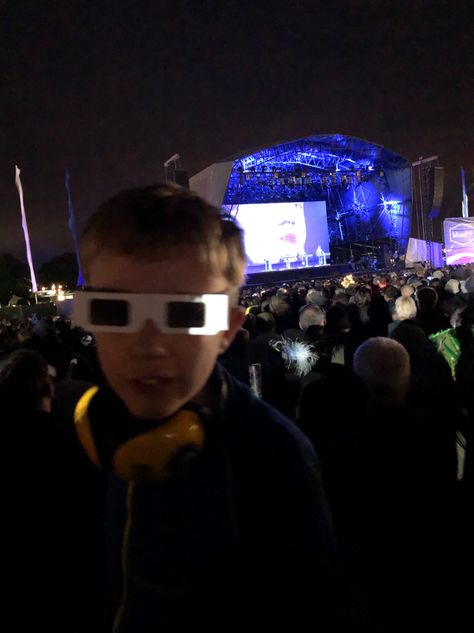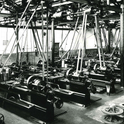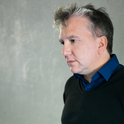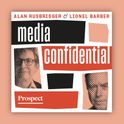It all began in the summer of 2010. My son, James, was about to turn four. Before his second birthday, he somehow taught himself to use my iPod. I knew what had attracted him to the device: a deep, compulsive interest in the music he was now listening to at every available moment.
He had started with the Beatles and explored their songs in a way that was both maddening and fascinating: repeatedly playing the first 15 seconds or so, then gradually extending the playing time until he reached the end. He used the same method with the obsessions that came next: the Clash and the 1970s band Mott the Hoople. But now a new source of fascination had entered our lives. James was joyfully immersed in the German electronic pioneers Kraftwerk and the song that arguably still defines them: “Autobahn”, the 22-minute classic, released in 1974, that introduced the world not just to its creators but also to the possibilities of electronic music.
James is autistic. After a run of developmental tests and seemingly endless dealings with different parts of the NHS, we had received his diagnosis six months before his Kraftwerk obsession began. My partner and I already knew roughly what his autism meant: an intense kind of difference, woven through with some learning disabilities, that would entail a grinding struggle to get James the right support at school and an anxiety about his future that would never fully recede.
In addition to other autistic traits and tendencies, he was deeply unsettled—sometimes to the point of panic—by extraneous noise: vacuum cleaners, police sirens, hand dryers, barking dogs. But his intense mode of listening and hearing also had positive aspects. Because of James’s issues with speech and language, songs were our strongest source of connection. I also began to understand that he had an amazing ear for detail: with two or three plays of any piece of music, he would memorise every last nuance.
“Autobahn” is an evocation of a car journey between Düsseldorf and Hamburg, and it ebbs and flows in the way such an experience would. It quickly became James’s signature tune: he not only constantly listened to it but even mastered drawing his own wonky version of the motorway sign that adorns the album of the same name. And from there, he was off. He was soon almost as addicted to “The Robots”, the camped-up anthem—“We’re charging our battery / And now we’re full of energy / We are the robots!”—that begins Kraftwerk’s 1978 album, The Man-Machine. He instantly loved their cycling anthem “Tour de France” and two songs from 1975’s Trans-Europe Express: the title track and “Europe Endless”, both of which projected the sense of propulsive joy contained within “Autobahn” onto train travel.
But everything always came back to the Kraftwerk song that he discovered first. Whenever we drove on a motorway, he would insist that we play it in full, a ritual that brought to mind a quotation from one of Kraftwerk’s founders, Ralf Hütter: “You can listen to ‘Autobahn’ and then go and drive on the motorway. Then you will discover that your car is a musical instrument.”
I have now written a book about James—and the fascinating links between music and autism—that includes the story of his Kraftwerk fixation and how I came to make sense of it. At first, his love of their music seemed bound up with its mesmeric repetition. (As the music writer Ian Penman put it, “Autobahn” is “as much about the childish joy of repeating one hypnotic phrase over and over again as it is the reality of purring along German motorways.”) But there were also much deeper points of connection, related to what the songs say and the profundities they deal in. James is now 18, and his relationship with Kraftwerk’s music is still unfolding: it is not an overstatement to say that the group and their music form a small but essential part of who he is and how he relates to the world.
In 2017, I came across a post on the blogging site Tumblr titled “Autismwelt”. It was written by an autistic Kraftwerk fan who eloquently described how the themes of so many of the group’s songs chimed with their own experiences: “A world comprised mainly of mechanical objects rather than people; a world where communication with others is a bewildering and confusing game, a hall of mirrors; a world where communication and rapport is more easily established with machines than with other people—this is Autism World.”
The post also included observations of Hütter and his creative partner Florian Schneider’s supposed habits and behaviours—not anything as crass as an amateur diagnosis of autism, but rather an attempt to detect what psychologists call a “cognitive style”. Like Schneider (who left Kraftwerk in 2009 and died in 2020, aged 73), Hütter is famously reserved and taciturn. Apocryphal stories about the band have long centred on their reclusiveness and fondness for routine. Hütter and Schneider also seem to have shared an aversion to unwanted noise: on tours of the United States, they would carry scissors to cut the wires that piped muzak into lifts. “We want to listen to the elevator,” Hütter explained. “It’s more interesting to listen to the sound of the elevator—zwiiiiit, pwhrrr!—than to some muzak, which is sound pollution.”
There seems to be an even bigger story here about electronic music and neurodivergence. I have yet to find any academic work on the subject. But, in 2022, the UK’s Association for Electronic Music released a survey of musicians that caught headlines: 58 per cent of respondents reported having a neurodivergent condition—autism, ADHD, dyspraxia—and 38 per cent reported being clinically diagnosed. The findings suggested there was something worth investigating.
The reporting connected these findings to the openness of electronic music culture, which is synonymous with dancing and offers a safe haven for people who might feel estranged from the world of so-called neurotypicals. But clearly some of the story is about the nature of electronic music and how it fuses with numerous autistic and neurodivergent traits. Learning to play it requires both programming skills and a talent for recognising and creating patterns. And as evidenced by the common perception of electronic maestros spending long and lonely hours honing their craft, it helps to be focused and comfortable with solitude.
It is probably no coincidence that among the inheritors of Kraftwerk’s mantle is the British musician Gary Numan, who has said that as a child he was given a tentative diagnosis of Asperger’s syndrome—the subcategory of autism that was removed from diagnostic manuals in 2013 but lingers in the culture. His interviews usually include quotes that flesh out what this means: “I’ve had a lifelong problem with feeling comfortable around people and knowing what to say… I find the whole thing stressful and panicky.” But Numan also talks about his autism as a wellspring of drive and attention to detail: “They talk about Asperger’s people as being obsessive, as if that’s a bad thing… [but] it gives you skills that in certain professions are very useful.”
Like Kraftwerk, Numan has always adopted a distant, faux-robotic persona that perhaps chimes with the idea of electronic music being completely cold and emotionless. But, from the start, the best music that was made using cutting-edge technology has defied those stereotypes. “I think a synthesiser is very responsive to a person,” Hütter once said. “It’s referred to as cold machinery, but as soon as you put a different person in the synthesiser, it’s very responsive to different vibrations. I think it’s much more sensitive than a traditional instrument like a guitar.”
Research into autistic people’s appreciation of the emotional aspects of music has similarly overturned old clichés. In 2008, for example, a group of psychologists—led by Pamela Heaton, an authority on music and autism based at Goldsmiths, University of London—conducted an experiment in which music was played to a group of autistic people, who were then asked to connect each piece to an image of a particular emotion. The researchers came to a clear conclusion: “Individuals with autism, who experience difficulties with human expressions of emotion, are nevertheless sensitive to expressions of emotion in music.” I see this in my son: naming human feelings as expressed in images of faces is something James finds difficult, but if he’s asked to spot key emotions—anger, sadness, calm, excitement—in particular pieces of music, he tends to instantly get them right.
In my experience, the more vivid and sense-filling the music, the greater its emotional impact on him. And however they present it, Kraftwerk’s music is full of human feeling: the deep melancholia in “Radioactivity” and “The Model”, the very modern unease in “Computer World” and “The Hall of Mirrors”. Contrary to stereotype, moreover, their forte might be their own version of unbounded joy—a quality exuded not just by “Autobahn” but by such songs as “Neon Lights” and “Tour de France”.
I know as a matter of certainty that James hears these songs with an amazing intensity: Heaton has compared some autistic people’s processing of music with “being on LSD when you’re looking at a painting”. Because of its clarity and perfection—and the absence of murk and clutter that bedevils a lot of rock music—Kraftwerk’s art is ideally suited to that kind of sensory perception, which is why James’s connection to it remains as profound as ever.
Kraftwerk’s last original music was the album Tour de France Soundtracks, released in 2003. Hütter is the only remaining member of the classic quartet and now leads a group that regularly tours the world presenting a greatest hits show with 3D visuals that require the audience to wear cardboard glasses adorned with the band’s artwork. The show has barely changed in over 10 years, but audiences do not seem to mind: their performances now work as a celebration of how ahead of their time they once were—and arguably still are.
In 2019, Kraftwerk headlined the Bluedot Festival at the Jodrell Bank radio telescope in rural Cheshire. We managed to get a family ticket, which sent James into long weeks of excited preparation, googling every last detail of the group’s history and watching YouTube videos of their recent concerts. When the big day came, the moment I handed him his branded spectacles marked the beginning of a spell of delirious excitement that did not let up for the next two hours. When my partner put her hand on his chest, she found that his heart was beating very quickly indeed.
As darkness began to fall, Kraftwerk initially played a handful of their most beloved songs: “Computer Love”, “The Man-Machine”, “The Model”. For James, the key moment came just over halfway through, heralded by the cough of a car engine and two beeps of a digital horn. “Autobahn” and its serene accompanying visuals—of a Volkswagen Beetle gliding through the old West Germany—had such a transcendent effect on him that he seemed to be in an altered state.
Strange as it may sound, as Kraftwerk played on, their connection with something deep within him confirmed what seemed to be a beautiful paradox: that for all their statuesque poise and attention to detail, the four men onstage were specialists in their own kind of soul music.
John Harris’s Maybe I’m Amazed: A Story of Love and Connection in 10 Songs (John Murray) is available now. Kraftwerk headline the Forever Now festival at the National Bowl, Milton Keynes, on 22nd June













